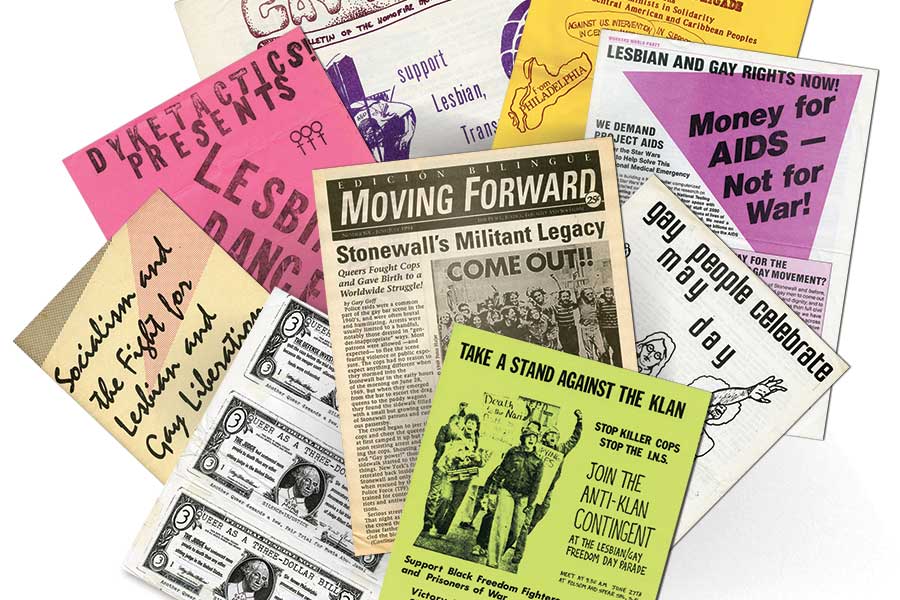When the Stonewall riots sparked the modern LGBTQ activist movement in 1969, radical left politics started dominating the discourse. As years passed, more mainstream liberal assimilationist voices grew, though radical leftist voices continued playing an important part of the movement’s political discussions.
On September 27, the William Way LGBT Community Center will offer a new exhibit that examines the role the radical left played in early movement politics. Called “The Most Revolutionary: LGBTQ Politics and the Radical Left, 1969-1999,” the exhibit is co-curated by John Anderies, director of the Wilcox Archives at William Way, and Brad Duncan, a private collector and archivist based in Philadelphia specializing in radical literature.
Many groups rooted in radical left politics, such as the Black Power, anti-war and women’s liberation movements, set the template for the early LGBTQ movement. The radical left inspired newly radicalized gay activists of the immediate post-Stonewall era, as evidenced by the founding of groups like Gay Liberation Front.
However, as the movement progressed through the ’70s and into the ’80s, many activists became focused on mainstream issues like the military, marriage and the unfolding AIDS crisis. The activists and movements showcased in “The Most Revolutionary,” however, resisted this push toward accommodation and assimilation.
Brad Duncan gave a talk at William Way which served as a dry run for this exhibit. “This exhibit covers some of the same themes as the talk,” said Duncan. “It’s a look at how the radical left political movement and the LGBT movement interacted or influenced each other.”
“What we hope to show with this exhibit,” he continued, “is that, despite it no longer being the loudest voice in terms of setting the agenda as we moved through the ’70s and ’80s, that radical voice never really went away. Even though it was less the face of gay activism in the ’80s, and certainly in the ’90s, it’s a torch that was never fully extinguished.” That voice was kept alive largely by the older generation of gay activists who had been radicalized by Stonewall.
However, the radical left had a resurgence in the ’90s with a new generation of activists who had been radicalized by AIDS and Reagan. This new generation of radical leftists are the ones leading the struggle in opposition to such developments as the increasing corporatization and consumerization of Pride.
“I think this exhibit will land well with today’s community,” said Duncan, “because so many of the issues of 1969 and ’70 that radicalized activists then are re-emerging in today’s politics and are radicalizing people anew.”
Much of the exhibit consists of ephemera such as flyers, pamphlets, newspapers — mediums activists used to deliver their message before the internet and social media.
In addition to giving people a chance to wander down gay activist memory lane, Duncan believes, “the exhibit will give people a great deal of historical context.” The exhibit is divided into sections focusing on different subjects, and with each section, the curators provide insight and information in several paragraphs of explanatory text.
“Something else to keep in mind,” Duncan added, “is that all of the material was made by the activist groups for the utilitarian purpose of trying to explain what they’re about and why they’re doing it, and why you should care — all of the text focuses on letting you know, this is what we’re fighting for. This is why you should get involved. So, beyond the text we provide ourselves, just looking at the items makes you realize these activists in the past are still trying to tell their story.”
The opening reception is Sept. 27, 6-8 p.m., at the William Way Center, 1315 Spruce St. The exhibit will be on display through December 27. For more information, call 215-732-2220 or email [email protected].
